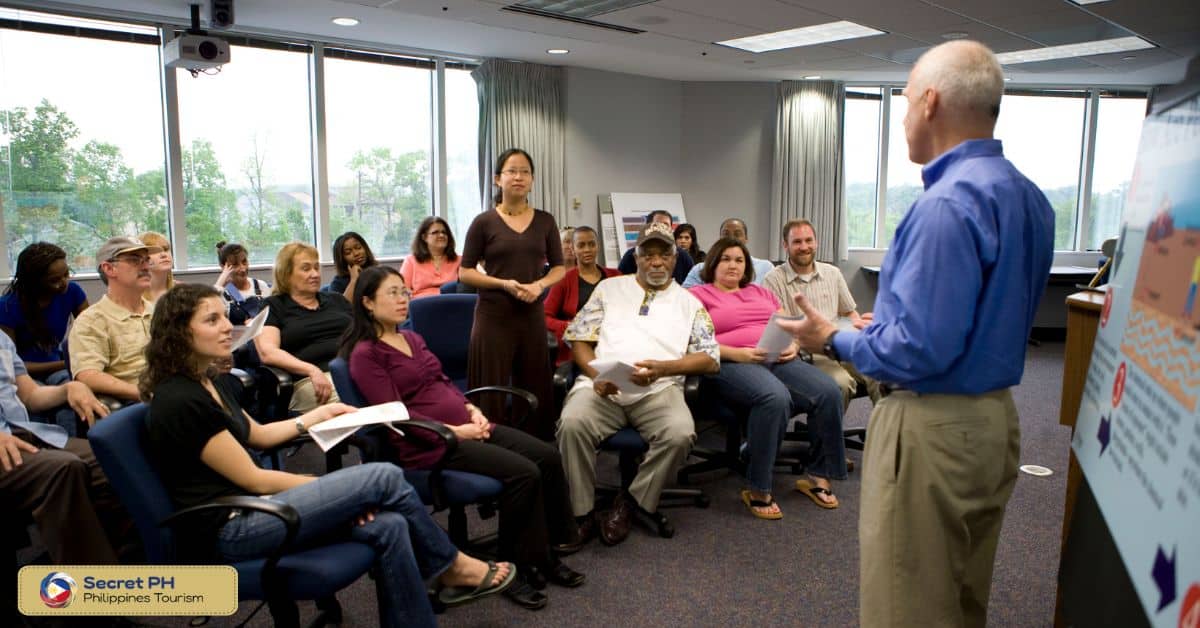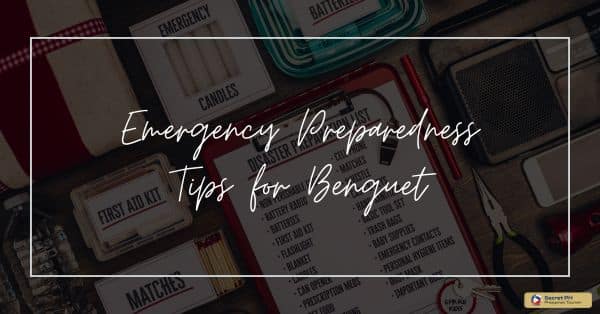Public education is crucial in the Philippines’ emergency services to ensure that the general public is aware of what to do during emergencies. This includes providing information on evacuation procedures, emergency contact numbers, and basic first aid techniques. A well-informed community can help reduce the risks and increase the chances of survival during emergencies.
In this blog, we will explore the importance of public education in the Philippines’ emergency services sector and how it can help save lives and protect communities. From educating individuals about emergency preparedness to training first responders, we will examine the various ways that public education can improve emergency services in the Philippines.

Public Education in Emergency Services
Public education in emergency services is a crucial aspect of any community’s readiness and response during disasters. The Philippines is a country prone to typhoons, earthquakes, and other natural calamities. They recognize the importance of educating its citizens on emergency preparedness. The government, together with non-government organizations and private sectors, has launched initiatives such as seminars, drills, and educational materials.
This is to spread awareness and impart necessary skills in responding to emergencies. Providing access to such education can save lives and minimize the damage caused by disasters. Being informed and prepared can make all the difference in times of crisis. The Philippines’ efforts in public education on emergency services serve as a shining example for other countries to follow.

Importance of Public Education in Emergency Services
Public education plays a critical role in emergency services. This is particularly in the Philippines where natural disasters occur frequently. The importance of educating the public about emergency services cannot be overstated. It can be the difference between life and death. Educating individuals in disaster response, first aid, and injury prevention can enhance their ability to cope during an emergency.
This training can help community members respond to different types of disasters and medical emergencies. These include fire, earthquake, or typhoons, with proper protocol and procedures. Without the right knowledge, individuals can be left helpless when confronted with an emergency.
Increased Awareness of Emergency Services
Increasing awareness of emergency services is crucial in the Philippines. It is essential that the public is well-informed of the importance of emergency services. Through this, they can help during critical situations. Public education plays a vital role in ensuring that the community is knowledgeable about emergency response systems. In turn, it helps improve the overall safety of the community. In recent years, there has been a significant push in the Philippines to raise awareness about emergency services.
By actively engaging with the public, emergency services can highlight the importance of preparedness. Also, educate people on what to do during an emergency. With this knowledge, people can take action when the need arises and help in mitigating damage caused by emergencies. Educating the public on emergency services is important now more than ever. All parties involved must work together to keep communities safe and secure.

Better Understanding of Emergency Preparedness and Response
Emergency preparedness and response are crucial in keeping individuals and communities safe during a crisis or disaster. This is especially true in the Philippines, a country prone to natural disasters. This includes earthquakes, typhoons, and volcanic eruptions. While effective emergency services are essential. Public education plays a crucial role in ensuring that citizens are knowledgeable and prepared during an emergency.
Educating the public on disaster preparedness, emergency procedures, and communication strategies can be the difference between life and death. It is vital to equip people with the necessary information and skills to face potential dangers and react appropriately in any situation. As emergency situations can occur at any time and anywhere, it is critical for individuals, households, and entire communities to be prepared and knowledgeable.

Encourages Civic Participation and Community Engagement
Public education plays a vital role in ensuring the safety and well-being of a community during emergencies. In the Philippines, effective public education empowers citizens with the knowledge. There are skills necessary for timely and appropriate responses to emergency situations. From fire and flood to natural disasters and medical emergencies. The community members are educated on emergency services are better equipped to protect themselves.
Including their loved ones, and their neighborhoods. Moreover, public education encourages civic participation and community engagement in emergency response efforts. Community members who are educated on emergency services are more likely to get involved in programs that support public safety and disaster preparedness, ultimately helping to build a more resilient and unified community.

Empowerment of Vulnerable Populations
In the Philippines, ensuring the empowerment of vulnerable populations in emergency situations is crucial. Public education on emergency services can play a pivotal role in achieving this goal. By educating vulnerable communities on how to access emergency services, how to stay safe during disasters, and how to effectively respond to emergency situations, we can equip them with the necessary skills and knowledge to take charge of their own safety and survival.
This not only boosts their confidence but also helps to reduce the burden on emergency services. Public education initiatives can have a significant impact on the empowerment of vulnerable populations, and it is essential that we invest in them to ensure a safer future for our communities.

Strategies for Public Education in Emergency Services
In times of crisis, emergency services play an essential role in protecting the public. Public education is a crucial aspect of emergency preparedness as it can become a matter of life and death. In the Philippines, a country that is prone to natural disasters, strategies for public education in emergency services are especially crucial.
With the right knowledge and training, citizens can take proactive measures to protect themselves and their communities. Effective strategies should include public outreach, risk communication, and community engagement to ensure that everyone is informed, prepared, and equipped to respond to emergencies.
Community Engagement and Outreach Programs
Community engagement and outreach programs are indispensable strategies that emergency services in the Philippines can utilize in improving public education about safety and disaster preparedness. These programs involve building relationships, promoting a sense of unity, and encouraging open communication between emergency responders and local communities.
Through these initiatives, emergency services can develop a deep understanding of the needs and challenges faced by different communities, which can then be used to tailor education and outreach efforts. Additionally, community engagement and outreach programs can improve trust in emergency services, foster cooperation during emergencies, and empower local communities to take an active role in disaster preparedness and response.

Public Awareness Campaigns
Public awareness campaigns are crucial in conveying information to the public during emergencies. In the Philippines, emergency services rely heavily on these campaigns to educate the public on disaster preparedness. With the frequent natural disasters that occur in the country, such as typhoons and earthquakes, it is essential that the public is well-informed.
Effective strategies for public education include social media, TV and radio broadcasts, and community meetings. In addition to educating the public, these campaigns also help emergency services in the Philippines better understand the needs and concerns of the community.

School-based Emergency Preparedness Education
In the Philippines, school-based emergency preparedness education has become a crucial aspect of the country’s disaster risk reduction management. With the frequent occurrence of natural calamities such as typhoons, floods, earthquakes, and landslides, it’s important for students, educators, and the community to be equipped with the necessary knowledge and skills to prepare and respond during emergencies. Through various strategies for public education in emergency services, schools can provide their students with valuable lessons on disaster risk reduction, first aid, search and rescue, and other essential emergency preparedness practices.
Incorporating emergency preparedness education in school curriculums and conducting regular drills can help foster a culture of safety and resilience in the Filipino youth and instill in them the importance of being prepared, always.

Public-Private Partnerships for Emergency Services
Public-Private Partnerships for Emergency Services have emerged as a crucial strategy for enhancing public education and promoting preparedness in disaster-prone countries like the Philippines. These partnerships can be built between governments, public and private organizations, and communities, with the aim of enhancing emergency services through shared resources and knowledge.
Such partnerships can be leveraged to develop and implement a range of education and communication initiatives aimed at raising awareness and promoting preparedness for emergencies such as earthquakes, typhoons, and floods. Through these efforts, communities and individuals can be empowered to take an active role in protecting themselves and others in the event of a disaster.

In Conclusion
In the Philippines, emergency services play a crucial role in ensuring the safety and health of citizens. However, without a strong foundation in public education, the effectiveness of these services may be limited. The importance of public education cannot be overstated. It empowers individuals with the knowledge and tools needed to make informed decisions during emergencies.
From fire safety to natural disasters, public education programs teach valuable skills that can save lives and prevent unnecessary damage. With a strong public education program, emergency services can be even more effective, and citizens can feel more confident in their ability to handle emergencies as they arise. Ultimately, investing in public education is an investment in the safety and well-being of the community.







